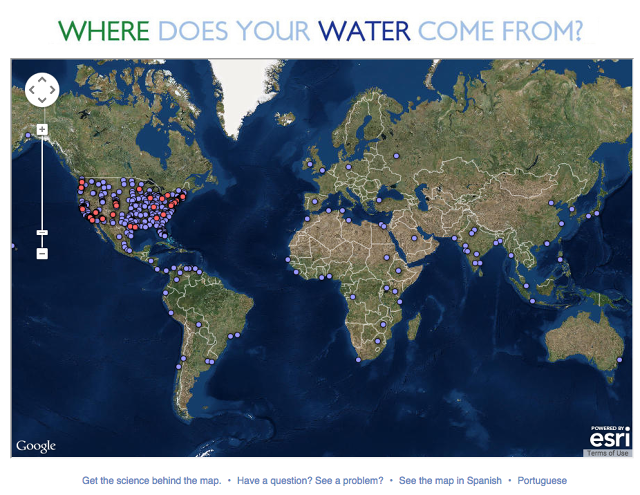How An outdated-faculty Nonprofit Is learning to inform A extra fascinating Story
the nature Conservancy’s new water campaign in moderation ventures right into a extra modern model of digital outreach.
April eight, 2015
the nature Conservancy, a sixty five-yr-old nonprofit and some of the world’s most well-funded environmental charities, doesn’t essentially lack for tools to arrange a elaborate website online. but on occasion, even it desires a lesson in how one can grasp the attention of the capricious web technology and inform its story better.
probably the most team’s main focal point areas is water. a few years ago, after conducting a survey, it realized an enormous majority of individuals—about 70% of respondents—had no clue where their own water comes from. Some merely mentioned “the faucet.” This used to be a foul signal.
“in case you’re trying to protect the last word water supply, which is the forests and watersheds that all of us depend on, and the vast majority of the public has no thought—you’ve got an issue,” says Giulio Boccaletti, the character Conservancy’s global managing director for water.

The group embarked on a campaign to teach the masses, correctly titled “the place Does Your Water Come From?” An informational web site incorporated a lot of facts and a Google Map; folks may click to look extra about the place their city’s water got here from. principally easy stuff. And a few of their participants and social media followers indeed visited. however the Nature Conservancy (TNC) came to are aware of it wasn’t having the influence they’d hoped.
“I wouldn’t say it failed, but i believe it spoke to our present constituency—people who were historically occupied with conservation,” Boccaletti says. “It was an extraordinarily analytical, non-emotional strategy to inform the story. There wasn’t actually a story side.” Even the language used to be a barrier. through extra focal point team work they realized that many people don’t even comprehend what a “watershed” is.
That’s around when the TNC’s youngest board member really useful the agency Lovesocial, a model technique and communications agency that’s enthusiastic about storytelling, particularly to youthful audiences. The agency had up to now worked with purchasers like NPR, Nike, the Tribeca film festival, and Joe recent. additionally, as a certified B-organization itself, it had a social good bent.

ultimate November, TNC’s “Liquid braveness” marketing campaign was born, moving from a text-heavy website to a interactive, scrolling website with chew-sized social content that concerned with the consumer. The #liquidcourage hashtag performed on young individuals’s use of the term in a extra alcohol-associated context. The website online locates the person and tells a simple story about their water—replacing the jargon with playful pictures as a substitute. On the first day, with the lend a hand of a social media service referred to as ThunderClap, LoveSocial estimates the initial message reached 1.2 million individuals. Of the some 60,000 individuals who got here to the website online, many spent minutes and almost 1/2 of tourists were between the a long time of 22 and forty.
The lesson from Lovesocial is that as older nonprofits compete for consideration towards more recent digital-savvy companies and different varieties of on-line media, they wish to re-assume their brand.
“There’s rather more of a need to clarify and simplify their choices, and really provide one thing ingenious,” says Azita Ardakani, Lovesocial’s 29-year-outdated CEO and founder. “to draw in audiences, and keep them there, and eventually flip them into evangelists, it’s about making the person the celebrity.”

The initial Liquid braveness website used to be the sort of success that, in March, TNC launched a brand new, increased model of the marketing campaign with a contemporary sponsorship for Pepsi. It takes about eight minutes to scroll via, and makes use of somewhat more humor than a large nonprofit may most often be pleased with. Explaining how much water goes into the manufacturing of, say, your jeans, it notes: “the subsequent time you get dressed, take into accounts us (no longer in a creepy manner).”
“For TNC, it’s an experiment, and it’s a challenge into a new means of doing issues,” says Boccaletti. “I see it as a pilot: can we tell our story and have interaction folks in a more narrative method, and a extra emotional approach, and in a technique that may activate the youthful technology?” He says: “in some way, we’re seeking to make it really feel like we’re making a motion, instead of simply passing on data.”
quick firm , , learn Full Story
(254)













